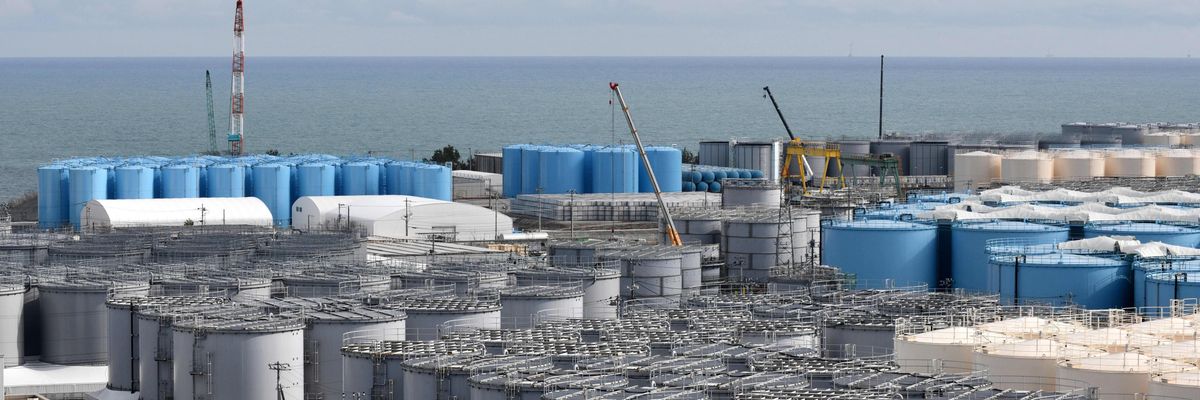Thousands of liters of radioactive wastewater from the destroyed Fukushima Daiichi Nuclear Power Station in Japan leaked from the outdoor vent of a filtering device, the company that operates the facility said Wednesday.
Tokyo Electric Power Company (TEPCO) said about 5,500 liters of both contaminated and filtered water leaked when a valve was left open during cleaning. The company, which said it discovered the leak on Wednesday morning, warned that some of the water—which is believed to contain 220 times the level of radioactivity required for government reporting—may have seeped into the ground.
"TEPCO has confirmed that there was no significant fluctuation in radiation measurements recorded at the site," the International Atomic Energy Agency (IAEA) said in a statement. "The event does not pose any risk to the public and there is no environmental impact off-site."
The Fukushima plant, located about 150 miles northeast of Tokyo, was catastrophically damaged during the massive March 2011 earthquake and tsunami that caused meltdowns in three of the facility's reactors.
Last July, the IAEA approved a Japanese plan to gradually release more than 1 million metric tons of filtered Fukushima wastewater into the Pacific, despite years of warnings from environmentalists and widespread opposition by people in the region.
News of the leak prompted an angry response from the Chinese government.
"Japan's repeated accidents in the process of treating Fukushima nuclear-contaminated water have fully exposed the chaos and disorder of TEPCO's internal management," a spokesperson for the Chinese Embassy in Tokyo said on Thursday, according to the South China Morning Post.
"The Japanese government's supervision measures are lacking and ineffective, which once again proves that the nuclear-contaminated water treatment equipment lacks long-term reliability," the official added.
Asserting that "the discharge of the Fukushima nuclear-contaminated water into the sea is related to the health of all mankind, the global marine environment, and international public interests," the spokesperson reiterated calls for Japan to "face up to the concerns of its neighboring countries and the international community."
The new leak follows the October 2023 accident at a separate Fukushima wastewater treatment facility in which four workers were sprayed with radioactive liquid waste while cleaning pipes. Two of the workers were briefly hospitalized for skin contamination, although none showed symptoms of radiation poisoning.
There have been regular demonstrations against the Fukushima wastewater dump in South Korea and China—two countries that, like many others with nuclear power plants, have discharged far greater quantities of treated radioactive wastewater into oceans and other bodies of water than Japan says it will release.
